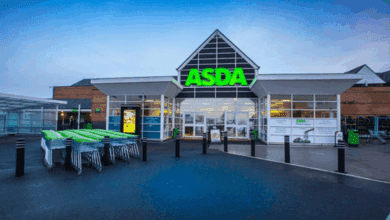Mastering retail advertising: Strategies and best practices
Retail Sector advises retailers on the best ways to advertise their brand and how to tailor it seasonally

Standing out from the crowd in the UK retail sector is a significant challenge. Effective advertising is crucial for achieving this goal, as it helps to build brand recognition, attract new customers, and retain existing ones.
Understanding your audience
The foundation of any successful advertising campaign is a thorough understanding of your target audience. Retailers must invest in market research to identify their customer demographics, preferences, and shopping behaviours. This involves analysing data from customer surveys, purchasing patterns, and social media interactions. With a clear picture of your audience, you can tailor your advertising strategies to resonate with them more effectively.
Traditional advertising
Despite the rise of digital media, traditional advertising methods still hold significant value for retailers, particularly for reaching older demographics and local customers.
Newspapers, magazines, and brochures can effectively target specific geographical areas or interest groups. High-quality images and compelling copy are essential to capture the reader’s attention.
Television and radio offer broad reach and can be very effective for brand building. Although prime time slots can be expensive, the potential return on investment (ROI) can justify the cost, especially during peak seasons like Christmas.
Strategically placed billboards in high-traffic areas can create significant brand visibility. Outdoor advertising is particularly effective for brand recognition and promoting local stores.
Digital advertising strategies
Digital advertising has revolutionised the retail sector by offering more targeted and measurable campaigns. Here are some key digital strategies:
Google Ads and Bing Ads allow retailers to appear at the top of search results for relevant keywords, driving significant traffic to websites and physical stores.
Platforms like Facebook, Instagram, and Twitter offer targeted advertising options based on user demographics, interests, and behaviours. Visual content, such as images and videos, tends to perform well on these platforms.
Email marketing is a cost-effective way to reach existing customers with personalised offers and updates. Building a robust email list and segmenting it based on customer preferences can enhance engagement rates.
Collaborating with influencers who resonate with your target audience can boost brand credibility and reach. Micro-influencers, who have smaller but highly engaged followings, can be particularly effective for niche markets.
Combining online and offline strategies
An integrated approach that combines online and offline advertising can maximise reach and impact. Here are some ways to blend these strategies:
Omnichannel marketing ensures a seamless customer experience across all channels, from online stores to physical locations. Consistent branding and messaging across platforms reinforce your brand identity.
Hosting events, such as product launches or seasonal sales, in physical stores can be promoted through digital channels to increase foot traffic. Use social media, email marketing, and online ads to create buzz.
Encouraging customers to order online and pick up in-store can drive additional in-store purchases. Advertise these services prominently on your website and through digital ads.
Content marketing
Content marketing involves creating valuable, relevant content to attract and engage your target audience. This can include blog posts, videos, infographics, and social media updates.
Share tips, tutorials, and how-to guides related to your products. This positions your brand as an expert in the field and builds trust with your audience. Tell compelling stories about your brand, products, or customers. Emotional connections can be powerful drivers of customer loyalty.
It is also important to recognise seasons and holidays which are important to your brand and find ways of tailoring your advertising to that. Christmas and New Year is a prime time for increased consumer spending, with people buying gifts, decorations, and festive supplies.
Develop a seasonal calendar
Creating a seasonal calendar helps in planning and executing your advertising campaigns effectively. This calendar should include all the major holidays and events relevant to your business, along with key dates for campaign launches and promotional periods. By having a clear timeline, you can ensure that your campaigns are well-prepared and launched on time.
Choosing the right strategy
Traditional media can be more expensive, while digital advertising often offers more flexibility and lower costs. However, a well-placed TV ad during peak times can provide a substantial ROI for larger budgets. Therefore your budget should be of paramount importance.
If your audience is younger and more tech-savvy, digital and social media advertising will likely be more effective. Older audiences may respond better to print and television ads. For brand awareness, broad-reaching media like TV and billboards can be effective. For driving immediate sales, targeted digital ads and email marketing might be better suited.
Look at what your competitors are doing and identify gaps in their strategies that you can exploit. Ensure your approach aligns with your unique brand identity. Digital campaigns offer robust tracking and analytics capabilities, making it easier to measure success and adjust strategies. Traditional methods may require more effort to evaluate effectiveness.







